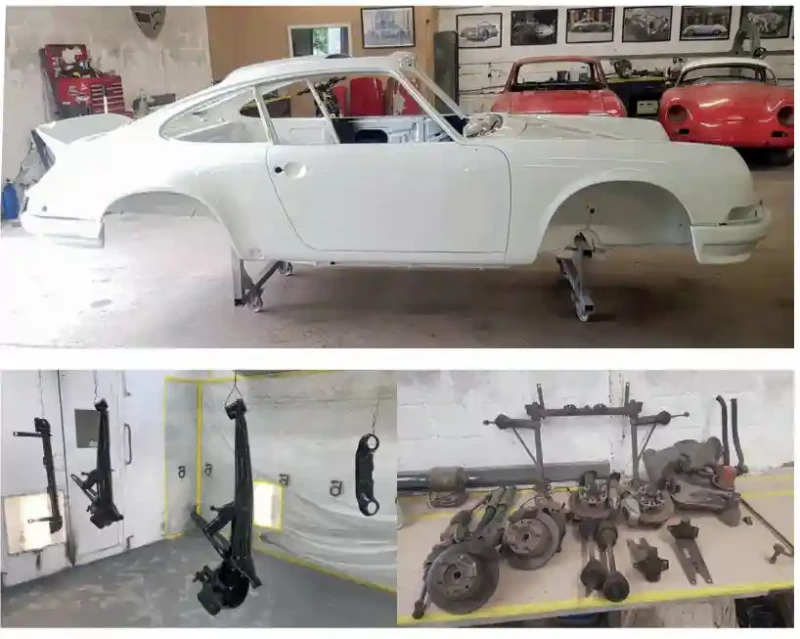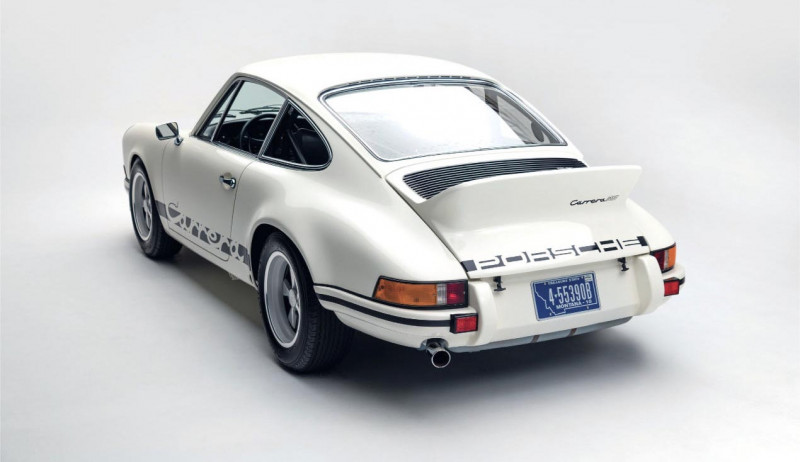 Porsche 911 Classic
Porsche 911 Classic
Summary
Porsche 911 Classic Mk1 1963-1974 SWB and LWB pre-Bumpers models Club
James Elliott 3 months ago #
HIP, HIP, HOORAY! It’s time for a celebration. The Carrera RS bodyshell is finally finished and pulsatingly brilliant in its freshly applied Grand Prix White paintwork – the last of five preceding coats that from my perspective seemed to go on forever, with panels coming off and being reinstated during the application of each.
1973 PORSCHE 911 2.7 RS
These successive coats comprised, in order of application, epoxy primer, polyester primer, final primer and then the base-coat colour, all lovingly massaged to a glass-like finish before the application of three coats of lacquer and a final wet-flat and polish.
Project RS has now moved on to the fitting-up stage but, before the ‘bits’ could be fitted, 40-odd years of weathering and accumulated crud had to be attended to and another visit to the blasting booth was in order. Surprise, surprise! Th e blasting once again revealed some r-u-s-t. It was in the rear suspension trailing arms, though mercifully very localised, and was quickly cut out and despatched to the scrap-metal bin by Steve.
The tedious task of painting and masking dozens of individual parts followed. With them dangling on wires (bott om left), the spray booth resembled an automotive abattoir or a scene from the Texas Chain Saw Massacre, which, as film fans know, is set in 1973, the year the RS rolled out from Stuttgart.
With all the parts looking nice and shiny at last, new bearings have been fitted where appropriate, and the suspension reattached to the body. Dampers and front uprights have been painted in the original green and the brakes dismantled, blasted and reassembled. A question, yet to be resolved, remains over the state of the calipers.
It has been a long haul chasing the tin-worm from the body but it has finally been exterminated. However, fear not, faithful followers, there’s still a considerable distance to travel and more progress reports to file before I can finally ‘fire up the RS’.
Before the glass can go in, a new headlining and the instruments have to be fitted. The original wiring loom is still in the car so I’m hoping that connecting the electrics will not be too time-consuming – although admittedly that has been my hope at every stage so far!
By the time of my next report, the Carrera should be sitting on its wheels and beginning to look more like the mean machine it once was.

Dan Furr 1 year ago #
Of course it’s all wrong. Were you to design the perfect sports car from a clean sheet of paper, it probably wouldn’t have its engine slung out the back. History tells us that, through an iterative process, Porsche made the layout work. History also suggests that Porsche committed to this architecture because it was an integral part of the company’s DNA.
That’s not strictly true. As early as February 1972, when the 911 was a mere nine years old, the company planned to replace it with what became the 928. Porsche chairman Ernst Fuhrmann was far from wedded to a rear-engined future and plotted its front-engined replacement. “Everyone was on board,” claimed 928 project director Wolfhelm Gorissen.
Fortunately, the 911 outlasted both the 928 and Fuhrmann. In 1982, new CEO Peter Schutz ushered Fuhrmann out the door. Schutz took one look at a product development chart that had the 911 running into the buffers, grabbed a marker and extended the 911 line across the board, way past the 928. It was a symbolic gesture but it made one thing very clear. There was no Porsche without the 911.
The 959 project clearly informed the direction of future 911s, which saw the introduction of all-wheel drive on the 964 generation, the multi-link Weissach axle on the 993, liquid cooling and stability control on the 996 and the dual-clutch transmission on the 997.
What elevates the Porsche 911 to greatness? More than anything it’s the care that Porsche has taken in rewarding the driver. Flawed it may have been, but the 911 has never shortchanged us when it comes to delivering excitement. It occupies one of the few motoring sub-niches where rivals have simply given up trying to confront it head-on, a rare honour it shares with maybe only two other cars in these lists, the Mazda MX-5 and the Jeep Wrangler.
That recognition has kindled and rekindled the 911’s fire. That flame was flickering when Schutz entered the building, with 911 sales hovering around 11,000 units. Now it sells over four times that figure and is protected by the financial buffer of 200,000 Porsche SUV sales. The 911 could so easily have become a lazy caricature of itself. Instead it’s become a legend.

The 911 has never shortchanged us when it comes to delivering excitement



